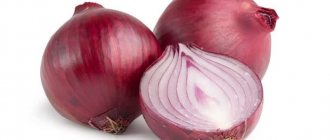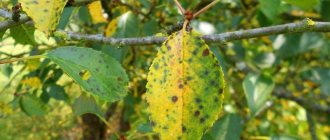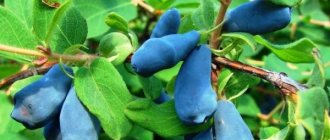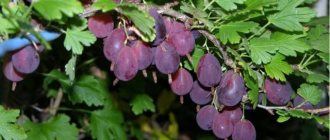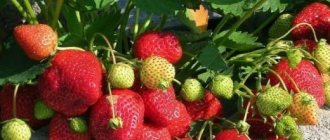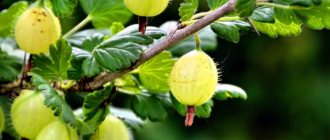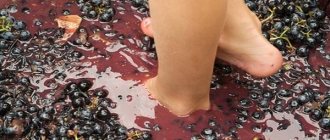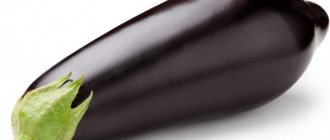Description and characteristics of the variety
The Elan variety was bred in Kuban, so it is excellent for growing in temperate and warm climates. It is characterized as very early. This means that, first of all, you can get excellent greens “for the feather” already in April or May. At this time, the onion receives the maximum amount of sun and moisture. If you don't need a lot of greens, you'll get a nice harvest of bulbs in early summer. Elan is also characterized as a winter onion - with possible planting in November.
Did you know? The Latin name Allium was given to the onion by the famous botanist Carl Linnaeus. He took as a basis the Celtic word for “burning”
-
“all”, thereby characterizing its main quality.
Before winter, the bulbs are planted in order to get the harvest early - in early June. When planting in spring, the harvest should be expected a month later. More precisely, the timing of planting the Elan variety is as follows: no later than a month before stable frosts in the fall, and no earlier than a month before the last soil frost in the spring. The growing season is 90 days. Designed for cultivation in personal plots or on an industrial scale. It is considered universal and can be consumed both raw and as part of various dishes.
Main characteristics of the Elan variety:
- bulb weight - 110-120 g, diameter - 7 cm, size - medium;
- the maximum recorded size of the bulb is 15 cm with a weight of about 500 g;
- shape - spherical or slightly flattened;
- number of bulbs - one;
- pulp - white, aromatic;
- taste - spicy, sweetish;
- scales are straw-yellow, tightly adjacent to the bulb;
- the rosette of leaves is quite dense;
- height - up to 30 cm;
- during the growth period, the greens stand upright and practically do not lie down;
- leaf color - dark green with a waxy coating;
- leaf diameter is average.
Did you know? A distinctive feature of the Elan variety
-
does not cause tears when cutting.
Characterized by good seed germination (80–90%). Resistant to most bulbous diseases. Very hardy and can grow in a wide range of growing conditions.
Advantages and disadvantages
Positive characteristics of Ellan:
- early maturation;
- aligned bulb shape;
- frost resistance of seeds and sets (they sprout even at +1…+2°C);
- good taste;
- high ripening rate (before harvesting - 82%, after ripening - 96–100%).
The disadvantage of this variety is its short shelf life. Vegetables quickly begin to deteriorate and dry out.
The main difference between Ellan and other varieties is its early ripening. Winter onions are harvested already in June - July, when last year's vegetables are running out and new ones have not yet grown.
Growing at home
Onions are a perennial, so they are propagated by seeds and sets - small bulbs of the first year of growth. In private plots, planting seedlings is usually practiced. Onions require a sunny, well-ventilated, open area to grow. The soil must be loose, otherwise the plant forms small bulbs and may be affected by powdery mildew. When growing, crop rotation is observed, planting it after cabbage, nightshades (tomato, pepper), potatoes or cucumbers. Crop rotation allows you to reduce the damage to crops by pests that will continue to exist on the site after harvest.
Did you know? The ancient Egyptians considered the spherical onion to be a symbol of the Universe.
To accelerate harvesting, growing from seedlings and then placing them in open ground is used. The seedling method is not practiced by summer residents, as it is considered labor-intensive. But if onions are grown for sale, then accelerated harvesting will be a significant advantage. This will ensure the crop ripens 2 weeks earlier than with normal planting. Elan is quite easy to grow and is not too susceptible to disease. Onions love cool weather. This helps it take root and grow better. Most often, it is planted in the spring.
But in regions with mild winters, winter planting is practiced. Onions grow well in cold weather, rooting and producing leaves, and forming bulbs in warm weather. Onion seeds are planted in the ground in the spring approximately a month before the end of frost. If indoors for seedlings, then 2-3 weeks earlier. When the feather reaches a height of 6–9 cm, the seedlings can begin to be hardened, and after a week they can be planted in the ground. Outdoors, planting is carried out in rows with a distance of 7 cm between rows and 5 cm between plants.
Optimal sowing dates
Sowing onions from seeds is practiced in early spring. It is enough for the soil to warm up to +1°C. Planting is usually carried out in March-April 4-6 weeks before the last frost. Onions are long-day crops and require 14–16 hours of daylight to form bulbs. It is not recommended to plant onions in June, as high temperatures also negatively affect the formation of the bulb.
Find out how to treat onions before planting.
Pre-winter sowing of sets is carried out in November or December for harvesting from late spring to early summer. A prerequisite is planting in normal, not frozen soil 3 weeks before the onset of stable frosts with a temperature of -2°C.
Growing conditions
Onion seeds have a hard shell and germinate very slowly at +1...+3°C. It is much better if the air temperature reaches +15...+19°C. It is also taken into account that onions are frost-resistant and feel good with long-term temperature drops to –4°C and short-term drops to –7°C. At temperatures below +12°C, the root system develops well, and if it rises, the leaves develop intensively. If onions are grown for greens, then the temperature should be at +20...+25°C.
The crop is not very demanding of light, so it is permissible to grow it in an area that is brightly lit by the sun and in an area with partial shade. The plant has increased requirements for moisture due to its small root system. In the first half of the growing season there must be a lot of water and moderate lighting, and in the second half, on the contrary, there must be a lot of sun. Lack of moisture during this period has a positive effect on the quality of the bulbs.
Did you know? For centuries, onions have been credited with healing properties. It is used in folk medicine to treat various ailments such as colds, earaches, laryngitis, animal bites, burns and warts.
Soil and fertilizers
To grow the Elan variety, as for other varieties, you must prepare an area with nutritious soil. The acidity of the soil on the site should not be more than 7 pH. In areas with a high clay content, the soil is more acidic, so lime or dolomite flour is added there 1–2 weeks before planting. You can measure the acidity level with a special device or test strips, which are sold in gardening stores.
Dense soil prevents the outflow of moisture after watering or rain, creating favorable conditions for the development of putrefactive bacteria. To avoid this, use a sloping area that provides natural drainage of water, and also dilute the soil in the garden bed with sand and peat. Apply 2–6 kg/m² of humus to the area when planting. Add any phosphorus-potassium fertilizer. You can create a layered structure in the planting trench by placing fertilizer, then a small layer of soil, and then planting onions and adding the rest of the soil.
Important! The bulb grows better and gains weight if part of it
—
the neck and shoulders are located above the surface of the bed.
Growing methods
In an annual crop, onions are grown by:
- sowing seeds in spring in open ground;
- planting onion sets in the ground to obtain marketable onions - this method is also called vegetative propagation;
- seedling growing method.
Seeds are usually planted in open ground in the spring. The sowing bed is prepared in the fall by digging up the soil and deoxidizing it. In the spring, planting trenches are formed, fertilizers are applied and bulbs or seeds are planted. Winter planting of seeds does not have any outstanding advantages, but is practiced by some farmers.
The seedling method is necessary in regions with short summers to accelerate crop growth. Also, some farmers claim that with the seedling method, the bulbs are formed larger, and their taste becomes milder. Vegetative propagation or sowing of onion sets is technologically almost no different from planting seeds. Performed in May.
Planting technology is:
- soil preparation;
- disinfection and preparation of seeds;
- preparation for landing.
Growing from seeds
Sowing of seeds is carried out between rows. The area is dug up, grooves are formed with a distance between them of 7 to 20 cm. Organic or mineral fertilizers are applied to the bottom of the grooves. Using rotted manure as a fertilizer has the added benefit of serving as an additional source of heat, which is good if planting is done in early March.
Planting and growing from seeds and sets
The crop can be grown from seeds or sets. It is important to properly prepare planting material:
- Seeds.
- Fill with cold water and keep it like this for about 1 hour. High-quality seeds will sink to the bottom, empty ones will float (they should be thrown away).
- Then disinfection is required. To do this, place the seeds in a pink manganese solution for 20 minutes. Additionally, carry out hardening - immerse the seeds in water at a temperature of +60°C, then dip in cold water.
- Sevok . Take only specimens with a diameter of 2 cm. Large bulbs are used for growing vegetables. Disinfection and hardening occur according to the same principle as with seeds.
Attention! Maintain crop rotation. The variety can be planted in beds after cabbage, potatoes, grains and legumes. Do not use soil after garlic, carrots, oats and onions.
Pay special attention to the soil . The recommendations are as follows:
- the acidity of the earth should not exceed 7 pH;
- if clay is present, add lime and dolomite flour to the soil (7-14 days before sowing the seeds);
- the soil must have good drainage - it is better to choose an elevated area;
- add sand additionally, or more effectively peat;
- For proper development of the crop, it is necessary to add humus or any phosphorus-potassium fertilizer at the rate of 3-5 kg of fertilizer per 1 sq. m. m plot.
Next, consider the landing rules:
- From seed in spring. Sow between rows:
- First dig up the ridge and form small grooves. The distance between the trenches should be from 15 to 20 cm.
- Fill the bottom of the holes with rotted manure.
- Planting scheme – 1.5 g of seeds per 1 sq. m beds. Plant the seeds to a depth of 2 cm.
- In the fall with the help of sets . Prepare the bed as in the previous method. Scheme - plant the sets in rows so that there is a distance of 10-15 cm between them. Between the bulbs - 1.5-2 cm.
Features of caring for the variety
Crop care consists of:
- loosening the soil;
- removal of weeds;
- glaze.
If fertilizers are applied during planting, then onions can do without additional fertilizer. But since fertilizers increase the yield by 30%, and also make it possible to obtain large, uniform bulbs, fertilizing is carried out in quantities from 2 for early varieties to 5-6 times per season for onions of late ripening varieties.
Watering and fertilizing
The small root system requires frequent watering, especially in the first month of growth.
When watering, consider the following:
- water only when the soil becomes dry;
- pour water directly in the root system zone - 5 cm more than the size of the bulb;
- the watering speed should be low so as not to damage the micro-roots;
- do not pour water between rows on empty areas, so as not to create conditions for the growth of weeds;
- use mulching between rows as a moisture regulator in the beds.
It is advisable to water the crops with water at or close to room temperature. Cold water is a source of stress. But since water heating systems for watering plots are usually not installed, consider installing a drip irrigation system. Water is supplied to the bulb with a special dispenser. A low watering rate is preferable for weak onion root systems.
You will be interested to know how to properly water onions.
In this case, the soil is not compressed into clods, you save water and use it more efficiently. Watering is carried out as the soil dries, but at least once a week. During the growing season you will spend about 9-10 waterings. During growth, onions are fed 2-3 times. The first feeding is carried out if the plants have reached a height of 2-3 cm, and the second - 20-25 days after the first.
When using organic fertilizers, adhere to the following dosages:
- mullein or rotted manure is diluted in water in a ratio of 1:10;
- bird droppings are diluted in a ratio of 1:15.
If mineral fertilizers are used, then dissolve in 10 liters of water:
- 25–30 g superphosphate;
- 10–15 g ammonium nitrate;
- 10–15 g of potassium chloride.
The first feeding is necessary to stimulate the process of vegetation and leaf development, as well as bulb laying.
The second is needed to create conditions for good development of the bulb. You can also apply a third feeding to speed up ripening. In this case, it is necessary to exclude from the composition organic and mineral fertilizers that contain nitrogen. We recommend that you find out what to do if the bow goes into the arrow.
Loosening the soil
At the time of planting, the soil in the garden bed is quite loose. After watering, it thickens and a dense crust forms on top, which does not allow oxygen to reach the roots. If it rains, dense soil retains moisture near the bulb, increasing the likelihood of plant pathogens developing. To prevent this, the soil is regularly loosened the next day after the soil is moistened.
Use a garden hoe or other tool. Its movement should be directed away from the bow to the side. This way you make room for further development of the bulb.
Weeding
Weeds grow almost everywhere, and onion beds are no exception. If you do not want to weed the soil frequently, cover the row spaces with mulch material. These can be materials of organic origin - straw, sawdust, leaves, or materials of inorganic origin - spunbond, plastic film and others.
Learn how to grow onions for greens at home.
Their tasks include:
- retain moisture in the soil after watering;
- prevent weed growth;
- reduce the number of pests coming into contact with plants.
Weeding is often combined with loosening and carried out on the second day after watering or rain. Weeds with a taproot system are pulled out, and those with creeping roots are cut with pruners and taken out as much as possible. It will not be possible to completely clear the bed of weeds before harvesting due to the extremely developed root system of creeping weeds.
Winter varieties: choosing the right ones
For winter farming, it is recommended to choose specially bred plants, frost-resistant hybrids, and short-day varieties. Onions planted in winter should form bulbs when there are 12 to 14 hours of daylight. Late varieties, as well as onion varieties grown in warm southern regions, are not suitable for planting in winter.
Incorrectly selected seed does not withstand winter well and freezes, which leads to bolting of green shoots and poor yield.
Experts involved in winter farming give preference to varieties from breeders from Holland.
- "Shakespeare". This is one of the most popular and reliable winter varieties. It can also be classified as an early ripening vegetable: it takes only 75 days for the head to ripen. The color of the shells (scales) is brown, the flesh is white, very juicy. The taste of the onion is semi-sharp. Characteristic features of the variety: rounded shape and large bulbs (about 100 g). Also, “Shakespeare” onions stand out among winter varieties due to their dense outer shell, which allows it to tolerate low temperatures (down to -18 0) even without snow cover. If the winter is snowy, the bulbs can withstand lower temperatures without damage. It is worth noting that most winter crops freeze at minus 15 0 in the absence of snow. This onion variety is disease resistant.
- "Radar". This is a promising variety with an average ripening period. “Radar” stands out among other winter varieties due to its excellent taste, as well as good performance during long-term storage. This winter onion has a good yield. The bulbs are large, weighing up to 150 grams. In favorable years and with proper care, the heads grow up to 300 grams. The color of the winter husk of Radar is light yellow.
Pest and disease control
With excessive moisture, soil fungi develop. Onion rot can cause leaves to wilt, roots to rot, and bulbs to soften. Depending on the type of rot, the plant becomes covered with plaque, necrotic spots and dies. It is important to avoid waterlogging of the soil by organizing proper watering and good drainage. To avoid problems, treat the plants with a solution of copper sulfate (2 g), urea (10 g) and zinc (1 g) dissolved in 10 liters of water, because avoiding the disease is much easier than treating it.
Important! Fungi are spread by water during irrigation, tillage tools and even shoes, so use all available preventive measures to prevent the onset of infection.
Downy mildew is also a fungal disease that damages foliage and bulbs, resulting in reduced yields. It appears as a soft gray coating and brown spots on the leaves. It also occurs due to high humidity. Make sure there is always enough light and air around the plants. Do not overcrowd and remove weeds regularly. Avoid getting water on the bulbs when watering. Remove infected leaves. A good way to combat it is to spray the plantation with a 1% solution of Bordeaux mixture or sulfur solution (50 g per 10 liters of water).
Another disease of bulbous plants is onion rust. It affects onions grown for greens. The fungus appears in the form of small rusty spots on the leaves, which is bad for the presentation of the plant. The phytopathogen causing the problem overwinters on plant organic matter, so the main preventative measure is to remove any tops after harvesting from the site. The development of the disease is favored by cool and damp weather. To combat fungi, use fungicides “Topaz”, “Falcon”, “Ordan” according to the instructions on the package.
If the crop was harvested from an area infected with a fungus, then before storing the bulbs, they are treated with hot water or heat at a temperature of +40°C for several hours. This helps destroy fungal spores. Bordeaux mixture is also used to treat crops. It is also recommended to treat the soil for disinfection after harvesting. As for pests, most often we are talking about insects that live in the soil and attack the bulb. These can be the larvae of various beetles and nematodes.
Did you know? The name “onion” was given due to the similarity of its shape to a turnip.
Main pests:
- The onion fly is dangerous because its breeding ground is onions. The insect lays larvae in the leaves. Having hatched, they begin to develop in the neck of the bulb, stopping growth and development, and then destroying the plant. The main signs of infection: yellowed leaves, a sharp putrid odor that intensifies after watering. It will take only 17 days for the larvae to develop to become a new generation of flies. Plants affected by insects will have to be destroyed. It is also practiced to treat the location of the infected bulb with boiling water. Mulching material helps fight the pest, since the fly simply does not get the opportunity to lay eggs. Sprinkling the beds with a layer of ash is also a good preventive measure.
- Thrips are sucking insects that feed on plant sap. Their presence is noticeable by small silvery spots on the leaf blade. They are dangerous because in places where the leaf blade is damaged, fungal spores can develop. To destroy pests, crops are treated with a solution of insecticidal soap.
- Bulbs are also affected by small worms - nematodes . They feed on plant sap and damage the bulb or leaves. The affected plant stops growth, the bulbs soften, and the leaf blades begin to deform. To combat the nematode, it is recommended to follow the rules of crop rotation and treat the beds and seed with hot water.
You will also be interested in learning how to deal with onion pests.
Planting onions before winter
This method is common in Kuban and other warm regions where the soil does not freeze in winter. It is possible to plant before winter in central Russia, provided that the soil is mulched and covered before the snow cover falls.
In Krasnodar and around the region, the cold-resistant shallot “Sorokozubka” is used for autumn planting. Its bulbs are multi-primed and are used for food and for vegetative propagation of onions. After harvesting, the onions are sorted, selecting bulbs weighing 20-40 grams for planting.
This onion does not reproduce well from seeds. To renew the seed, bulbs on peduncles are used. Shallots are good for their keeping quality and taste. It has a sharp pungent smell and taste, but does not drown out the taste of other products. Excellent for canning.
Of the onion varieties suitable for planting on the head before winter, the following varieties are suitable:
- Ellan;
- Arctic;
- Radar;
- Shakespeare.
Regardless of the variety, onions should be planted in the fall after frost, when the soil temperature does not exceed 0-2 degrees. The landing pattern is standard. Before the snow, cover the rows of onions with leaves or hay. After snow falls, you can additionally throw it on the beds for insulation.
With the onset of spring, onions quickly sprout, the soil is loosened, and the soil should be moist. The tops of onions planted before winter will fall in early June. You can harvest the crop and plant other crops in this place.
Harvesting and storing onions
The ripening time of onions depends not so much on the variety, but on the planting date and the prevailing weather. Take into account the duration of the growing season of the Elan variety - 90 days. By the end of this period, the onion tops should begin to turn yellow. If it rains, this will not happen. To speed up the process, the onion is slightly lifted by the tops. Rupture of the roots will lead to the fading of the development of the bulb.
Onions with drying tops are not watered and left in the ground for 2-3 weeks to allow the scales to thicken. Then the bulbs are removed from the soil and transferred to a dry room for further drying. Dry tops and roots are carefully cut off. A small tail 2–3 cm long is left on top. The room temperature should be about +20…+30°C. The prepared onions are stored in boxes.
For long-term storage, select only those bulbs that do not have external damage. To preserve the crop longer, it is practiced to disinfect the room in which it will be stored with a 10% solution of freshly slaked lime. Bulb storage temperature - +14°C, relative humidity - 70–80%. When frost sets in, the onions are covered with straw or hay.
Important! Onion sets are stored in a warm room at a temperature of +18
…+
20
°
C and relative humidity
-
65
-
70%.
If there are temperature fluctuations in winter, then you cannot store the sets at a temperature of +1 °
C. When landing, it will go into the arrow.
How and when to plant onions on nigella
At the same time as nigella, we also plant turnip onions on nigella. Back in the fall, 33 very large non-double bulbs of a “flattened” shape were laid. In the spring, I discard heavily sprouted turnips. All my life I have been trying to plant plants that have not yet hatched, but already have tiny roots. Bulbs made from the seeds of such turnips, in my opinion, last longer. While some gardeners, on the contrary, try to plant “tillering” bulbs. By spring, the descendants of such onions usually grow. Ours is stored until the next harvest.
Near the fence on the northern side of the garden, we dig a small “pit”, 1 x 0.7 m in size, about 6-8 cm deep, along the bottom of which we place large onion heads quite tightly. Sprinkle them with earth on top so that part of the neck remains open. Immediately on three sides along the perimeter we install meter-long sticks and entangle them with ropes. Old ribbons from dot matrix printers are very suitable for this. When the turnip gives arrows, no one remembers about it, and sticks with threads will not allow them to break off ahead of time, lie on the ground, i.e. will preserve the seed harvest.
Now all the onions are planted, you can start working on the carrots.
derevnyavolska.ru
Useful recommendations for gardeners
Onions grow well in most soils and in all conditions. But they still affect the yield, so experienced gardeners have long developed a number of additional rules that should be followed:
- use only fresh seeds for planting . The longer they are stored, the lower the percentage of germination;
- fresh seeds are less infected with pathogens, but for prevention, treat them before planting with fungicides ;
- growth stimulants allow you to obtain instant ripening of the crop and bulbs of approximately the same size, while they are not toxic to people and are applicable for any varieties of onions;
- in warm weather, seeds germinate better: at a temperature of +16...+18°C, sprouts will appear within a week, and at lower temperatures - only after 2–3. Take this into account when determining planting dates;
- the root system of onions is very small, so apply fertilizer only to the root zone and do not water the soil deeper than 3–5 cm, so as not to wash the fertilizers into the lower layers of the soil;
- removing weeds is especially important at the first stage of plant development - a small bulb simply cannot compete with weeds for moisture and nutrition;
- use mulching to protect crops from weeds;
- do not water the rows , there are no onion roots there, but there may be weed seeds;
- do not water the onions 2-3 weeks before harvesting , this will help you get lighter bulbs that will last longer.
Now you know exactly what to do to get a large onion harvest on your site. Use the acquired knowledge in practice and enjoy the result. And remember that a good harvest is not only the conditions that you provide, but also good planting material.
Care in spring and summer
Caring for winter onions differs little from cultivating spring varieties. After removing the mulch, you should fertilize the soil with urea (10 g/m2). Then thoroughly loosen the soil.
You can cover the area where the bulbs are planted with a thin layer of ash. When 3–4 green feathers are formed, the next fertilizing is carried out with a mixture of potassium (10 g/m2) and phosphate (20 g/m2) fertilizers.
They are best applied in liquid form. Fertilizers are dissolved in water or in “chatter” (a diluted infusion of herbs for watering garden plants). Experts warn: fertilizers must be applied strictly according to the recipe. It is better to “underfeed” plants than to “overfeed”.
Water onions only when necessary. In this case, drying out of the soil should be avoided. On dry soils, seedlings will be late and weak, which will affect the yield and quality of the vegetable.
The soil should be thoroughly loosened after each watering. This simple agrotechnical operation has a positive effect on development and growth and accelerates ripening.
Harvest ripe bulbs before the neck dries.
Ellan is an ultra-early winter onion variety. This is the first time this variety has appeared in our country.
It begins to ripen in early June, when the reserves of onions from last year's harvest have already run out, and there are still two to three months left before the new ones (regular varieties of onions). So ellan helps out in the summer. Many gardeners who have mastered this onion give preference to it.
In the summer, they sometimes buy freshly harvested bulbs from Afghanistan, Iran, Iraq, and Turkey (Afghan variety). In terms of quality, these bulbs are significantly inferior to ellan, and in terms of price they are generally incomparable. But why do we need foreign onions if we can grow our own - ellan.
The variety was obtained as a result of painstaking and many years of work by researchers of the Kuban State Agrarian University, Candidates of Agricultural Sciences Ekaterina Ivanovna and Viktor Panteleevich Tugo-lukov, with the guidance and direct participation of Academician of the Russian Agricultural Academy German Ivanovich Tarakanov.
The average diameter of the bulbs is 6–8 cm, weight — 100–120 g, but there are also half-kilogram bulbs with a diameter of up to 15 cm. The shape of the bulbs is round and round-flat. The bulb is protected from above by 1–3 dry covering scales.
Their color is yellow or straw yellow. Juicy scales are white, 5–8 mm thick, loose structure, sweet in taste. Ellan is prepared with great pleasure, since cutting it does not make your eyes water. Onions have high taste qualities. It is used to prepare a wide variety of dishes, fresh, stewed and fried. It can be eaten even by people with a sick stomach.
Ellan onions are no more difficult to grow than conventional varieties, but at the same time it is more economically profitable for both a simple gardener and a farmer or a more established vegetable farm.
High-quality onions are obtained at a time when there is high demand for them - you can quickly and profitably sell them. The yield of ellana under optimal growing conditions is 25-30% higher than standard varieties. Work on caring for winter onions is reduced by almost half, which reduces production costs.
Sow onions 6-7 g per 1 m2 with seeds, sets up to 200 g as early as possible, in the “February window”. A large fraction may shoot; if the shoot is removed in a timely manner, the presentation of the turnip onion will not deteriorate at all.
Remember! Ellan onion is a short-day variety, so it needs to be sown with seeds and planted as sets as early as possible so that by the onset of long days the plant has time to form a powerful leaf apparatus. Only under these conditions does it produce a high and early turnip harvest.
When sown with seeds, the turnip harvest will ripen in July, which is 1–1.5 months earlier than spring onions.
When planted as sets, the bulbs ripen even earlier - in June.
A gardener, selecting winter and spring onion varieties for cultivation, can organize a conveyor belt for fresh produce on his site.
Useful information: Homemade knitted clothing, knitted clothing for the garden and recreation: dresses, tunics, robes, sundresses must be attractive and made of high-quality materials. Wearing knitted clothes is equally comfortable in the country house and garden, as well as meeting guests.
How to grow turnips from nigella (onions) in one season?
Sergey Kostenko
In the Moscow region, sow seedlings in March or sometimes earlier, and in early May these seedlings are opened. soil... Well, in the south you can sow right away... really weeds... They interfere a lot... herbicides account for
Elena Gubaidullina
sow rarely then it will grow medium size
Tatiana Tsivilskaya
Sergei Kostenko wrote everything correctly. But not all onions can be planted this way. I've tried many varieties. Not all grow, even if it is written that they can be used in an annual culture. I liked Exhibition and Bagr ardent ball, pocket - nothing. This type of onion also stores worse. Although they write that there are annual onions for storage. I didn't get caught. As a rule, I use them in the fall. They are sweeter than two year olds...
Nadezhda Kotsareva
In your area only through seedlings
Hedgehog
it depends on the variety... for example, when sowing the seeds of Odintsovo onion, a turnip grows within a season. , although not large.. Moscow region.
Lyudmila Volkova
This year for the first time I sowed onions “Corundum” (Chelyabinsk) on May 5, I thought it would be good for greens. I thinned it out and used it for food without regret. Then I saw such large bulbs forming that I decided to leave them until they ripened. I got more yield from the remaining bulbs than from the sets planted at the same time. Now I will always sow nigella on turnips. In a week I’m going to sow “Chalcedony” and “Zolotnichek” onions before winter. I’ve already bought the seeds; these varieties are recommended for growing as an annual crop. The growing technology is the same as for regular onions. I live in Siberia.
